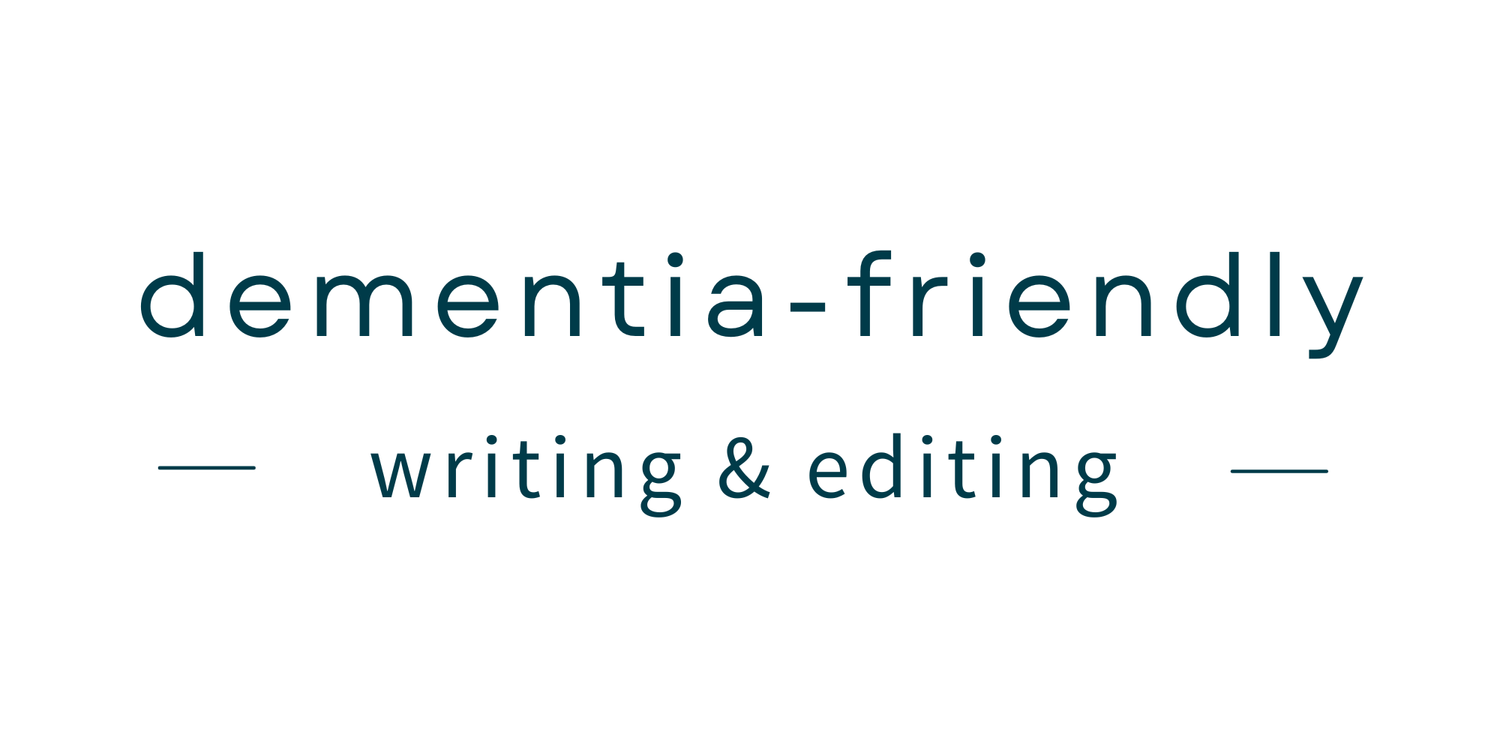Does your business need dementia-friendly writing?
In my previous posts we've had a quick look at what dementia actually is, and why we might need dementia-friendly writing.
But who should be providing it?
Whether you work in the private, public or third sectors, there will be occasions when you should be providing dementia-friendly information to your customers, users or colleagues.
For example:
A bank providing information about services on their website.
An insurance company sending out renewal letters.
An HR department updating their employee handbook.
A policy officer writing a consultation on a particular council or government initiative.
A health board inviting people to attend a vaccination clinic.
A charity writing a 'toolkit' to help people during the cost of living crisis.
A social enterprise advertising a public webinar.
“People with dementia have the right to written information about things that affect them, presented in a way that is as easy to understand as possible.”
Here are three examples that illustrate how this might work in practice:
Example 1: Rachel's Bank
Rachel downloads a PDF from her bank's website to help her set up online banking. It's very detailed and comprehensive, but there is a lot of information to take in. She finds it difficult to follow the thread of what she needs to do. Versions of the instructions are available in braille and in BSL via a video. There are also translations into a good selection of other languages, but there are no formats accessible to people living dementia. Rachel has to ask her son to help her understand what she needs to do.
Instructions in a dementia-friendly format would have helped Rachel set up her account on her own or with less help from others. The bank could have had the PDF edited and adapted to make it easier to follow. Rachel would have felt far less frustrated with her bank and more confident in her own ability to manage her life admin.
Example 2: Mark's Physiotherapy Questionnaire
Mark goes for a physiotherapy appointment. When he arrives at reception, he's given a two-page form to fill in. The form is packed with information and there are many complicated multi-part questions. Mark has some visual perception and information-processing challenges and finds the format hard to follow. Mark's partner goes through the form step-by-step and Mark provides the answers.
The department could have made the document easier to complete by:
changing font size, adding more white space and altering the design to make it clearer to read
making sentences shorter to help readers process information
using more concise writing and splitting the form into manageable chunks.
Example 3: Tomasz's Local Council
The local council is consulting on its Draft Wellbeing Plan. Tomasz has significant experience on this topic and would like to respond to the consultation on the council website. The colour contrast between the words and the background is poor, making the questions difficult to read. Each question deals with several different issues and Tomasz finds it hard to focus on what he'd like to write. He decides that answering the consultation will be too difficult and closes his computer.
The official in charge of drafting the Wellbeing Plan could have:
checked the colour contrast using a W3C accessibility checker
made the questions more strategic by focusing on one issue in each question.
These simple steps would have helped Tomasz contribute his knowledge and skills to the consultation.
More than 900,000 people in the UK live with dementia. Your customers. Your colleagues. Your consultees.
Contact me for a chat about providing the dementia-friendly information they need.

